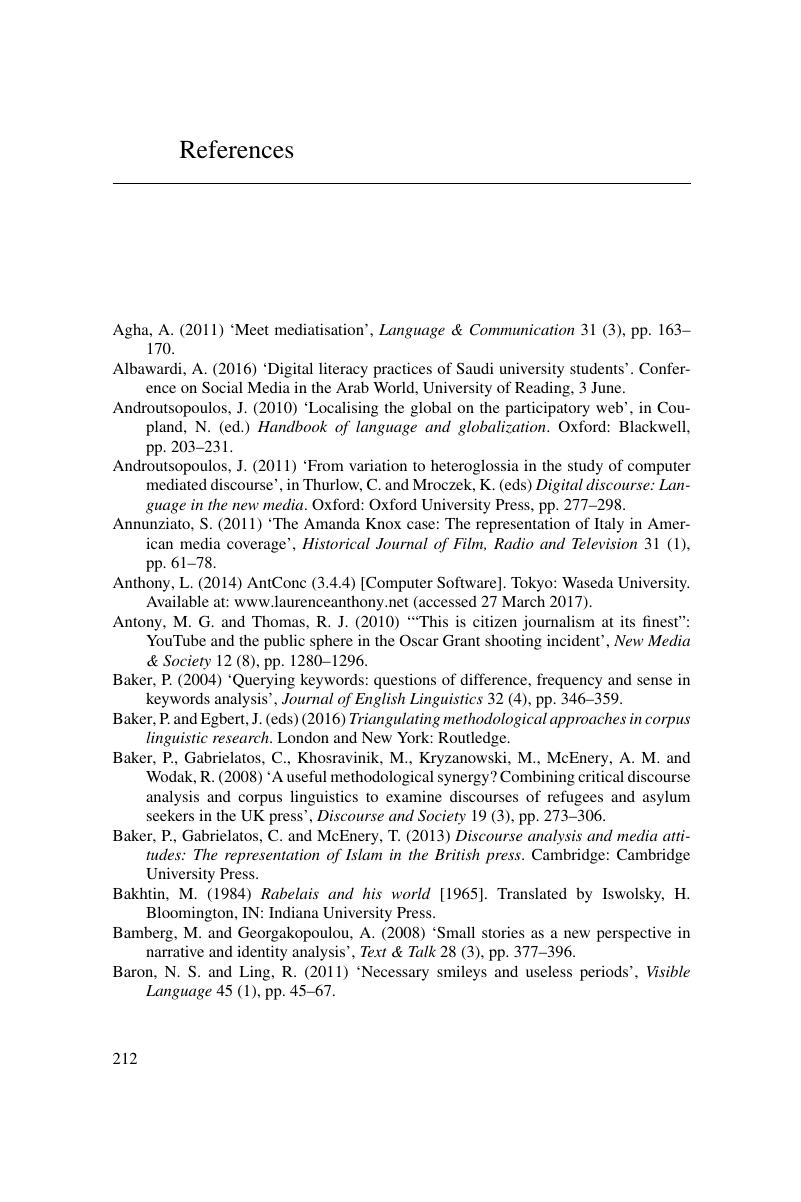Book contents
- Narratives Online
- Narratives Online
- Copyright page
- Dedication
- Contents
- Figures
- Tables
- Preface
- Acknowledgements
- 1 Introducing Shared Stories
- 2 Mediated Narrative Analysis: The Toolkit for Analysing Shared Stories
- 3 Stories in Wikipedia Articles: Is Sharing Ever Neutral?
- 4 Co-tellership in the Context of Wikipedia Talk Pages
- 5 Shared Stories and Bonding Icons in Facebook Community Pages
- 6 Collective Identities and Co-tellership in Facebook Comments
- 7 Shared Stories and Social Television Practices in Twitter
- 8 Co-tellership in Retweets
- 9 Citizen Journalism and Shared Stories in YouTube
- 10 Creative Sharing and Laughter in YouTube Comments
- 11 Shared Stories Revisited
- References
- Index
- References
References
Published online by Cambridge University Press: 12 January 2018
- Narratives Online
- Narratives Online
- Copyright page
- Dedication
- Contents
- Figures
- Tables
- Preface
- Acknowledgements
- 1 Introducing Shared Stories
- 2 Mediated Narrative Analysis: The Toolkit for Analysing Shared Stories
- 3 Stories in Wikipedia Articles: Is Sharing Ever Neutral?
- 4 Co-tellership in the Context of Wikipedia Talk Pages
- 5 Shared Stories and Bonding Icons in Facebook Community Pages
- 6 Collective Identities and Co-tellership in Facebook Comments
- 7 Shared Stories and Social Television Practices in Twitter
- 8 Co-tellership in Retweets
- 9 Citizen Journalism and Shared Stories in YouTube
- 10 Creative Sharing and Laughter in YouTube Comments
- 11 Shared Stories Revisited
- References
- Index
- References
Summary

- Type
- Chapter
- Information
- Narratives OnlineShared Stories in Social Media, pp. 212 - 226Publisher: Cambridge University PressPrint publication year: 2018



